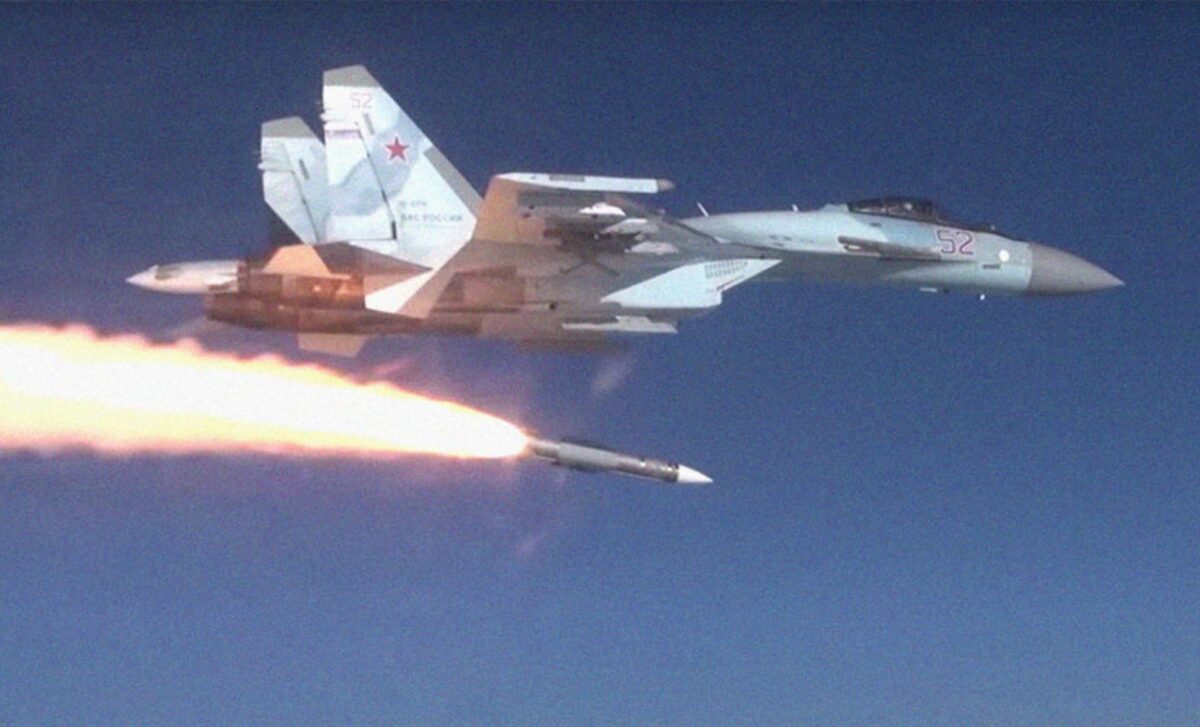Russia is reportedly fielding nuclear air-to-air missiles, marking what could be the reintroduction of a weapon class last seen during the Cold War. The disclosure comes from the U.S. Defense Intelligence Agency’s 2025 Worldwide Threat Assessment, raising new questions about Moscow’s strategic ambitions and evolving nuclear posture.
The report, made public during a recent Armed Services Subcommittee hearing in the United States House of Representatives, identifies the deployment of these weapons as part of Russia’s broader nuclear expansion. While details remain limited, the weapon in question is likely a variant of the R-37M, a long-range air-to-air missile currently in service with several modern Russian fighter platforms.
The development draws attention due to the rarity of nuclear-tipped air-to-air missiles in modern arsenals. These systems were once fielded by both the United States and the Soviet Union but were largely phased out with the end of the Cold War. Their return suggests a recalibration in Russian doctrine and underlines the technological trajectory of its military aviation capabilities.
Seconds to Impact: China’s Hypersonic Missiles Could Sink U.S. Carriers Before They React
A Cold War Relic Returns in Hypersonic Form
The R-37M, known to NATO as the AA-13 Axehead, is at the center of this renewed scrutiny. Originally developed by the Vympel design bureau, the missile was designed for the MiG-31 Foxhound interceptor and has since been integrated with other aircraft such as the Su-30SM, Su-35S, and Su-57. The enhanced R-37M, or izdeliye 610M, entered production following successful tests in the early 2010s and began operational deployment in 2018.
The missile weighs approximately 1,124 pounds and measures 13 feet in length. It is capable of engaging targets at extended ranges, reportedly up to 124 miles in its export version. The R-37M uses a dual-pulse solid-propellant rocket motor and features a dual-band active radar seeker. According to The War Zone, its performance allows for mid-course updates from the launch aircraft and autonomous target acquisition during the terminal engagement phase.
The Soviet-era predecessor to this weapon, the R-33S, was also known to have a nuclear variant. Given this background, the adaptation of a nuclear warhead for the R-37M would not be without precedent. The DIA’s reference to a “new” nuclear air-to-air missile strongly suggests an evolution of this system.
New Nuclear Deployments Raise Regional Stakes
According to the DIA report, Russia’s nuclear posture is expanding not only through new warhead types but also by deploying nuclear-capable systems in Belarus. The agency estimates Moscow’s arsenal includes around 1,550 deployed strategic warheads and as many as 2,000 non-strategic ones.
The same document highlights Russia’s use of nuclear rhetoric and drills in the context of the war in Ukraine. Despite this, the DIA assesses that Moscow would be “very unlikely” to employ nuclear weapons in the conflict unless it perceived a direct existential threat to the regime. Nonetheless, the appearance of nuclear-capable air-to-air missiles adds another layer of complexity to regional threat assessments and operational planning.
Visual evidence of R-37M missiles has emerged occasionally, including during public military displays and in operational settings over Ukraine. Ukrainian fighter pilot Andrii “Juice” Pilshchykov described the missile’s threat prior to his death in 2023, noting that it severely constrained the Ukrainian Air Force’s ability to operate near contested airspace.
Unmatched Capability in a Shifting Global Arsenal
The development of nuclear air-to-air missiles is not without historical analogs. During the Cold War, the United States deployed the AIM-26A, also known as the GAR-11 or ‘Nuclear Falcon,’ which carried a W54 warhead. It was the only guided nuclear air-to-air missile ever fielded by U.S. forces. In parallel, the U.S. Air Force briefly operated the unguided AIR-2 Genie with similar nuclear capabilities.
Unlike area-effect weapons used against bomber formations in the past, today’s nuclear air-to-air systems might be intended for use against formations of cruise missiles, drone swarms, or stealth aircraft. While Russia has not officially acknowledged the nuclear capability of its R-37M, the information disclosed by the DIA represents the only current identification of such a system in active service.
As mentioned in the media, footage released in 2024 by the Russian Ministry of Defense, which showed MiG-31s armed with older R-33 missiles during a “non-strategic nuclear forces” exercise, prompted speculation about the operational readiness of nuclear-armed variants. If confirmed, the R-37M and R-33S would stand alone as the only nuclear air-to-air weapons currently fielded by any country.








